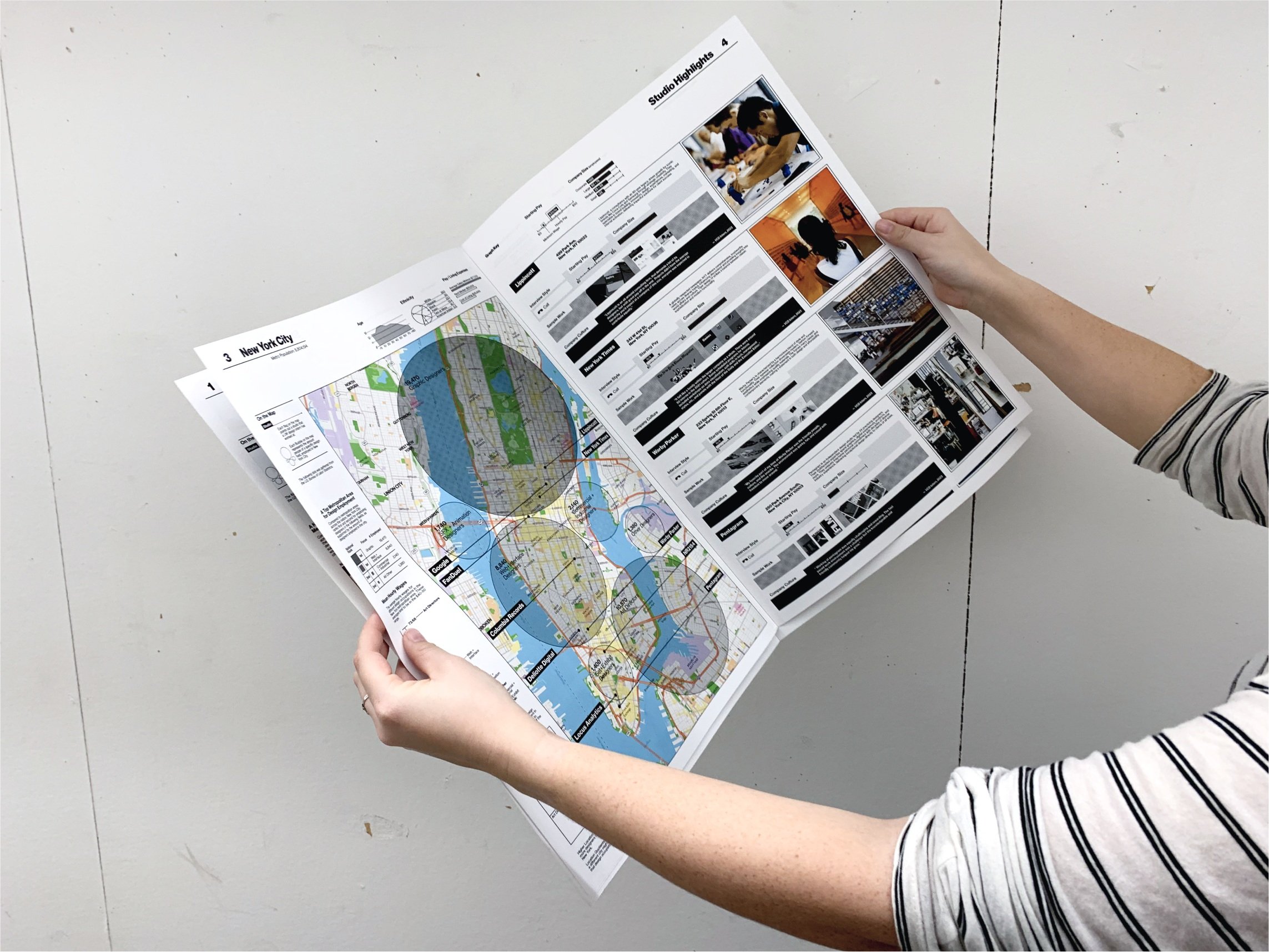Intern Atlas
A proof of concept for an annually produced broadsheet to provide students and alumni from UW Seattle’s design program an overview of where design jobs are available and where other students and alumni from the program are working. This annually published newspaper provides insight into potential next steps after graduating from the program and helps connect UW’s alumni network.
Time Frame
Six weeks
Year
2024
Tools
InDesign, Figma, Map Box, Google Sheets
Team
Jake Oehler, Caroline Laird

The Process
The Proposal
My partner and I started the process of creating this broadsheet by listing the kinds of data we felt connected well with our concept and would be useful to the reader. We then narrowed down our ideas into the form of rough thumbnails to show the overall flow of information as a comprehensive and cohesive story.
The Data
Before we could begin designing, we needed to gather and sort the data that would be presented in the final product. Data collection was the most time consuming aspect to this project. We identified dozens of data sources that we felt were necessary to produce a truly useful tool, collected the data using varied methods, and then compiled and organized our results into detailed spreadsheets.
Every data source we used included information on job location, company, hours per week of work, and compensation. Sometimes this information was taken from job search sites like Linkedin or Indeed to show what was available —
— and some we gathered ourselves. We distributed a short poll on where our fellow students want to move after graduation and also completed in-depth interviews with past students about their current jobs and internships, including how long they had been with their companies.
The Mood
To identify a unified visual direction, my partner and I first created a list of adjectives we wanted our project to evoke. We used the adjectives to make several mood boards which we then consolidated into one final board we felt most effectively captured the essence of what we wanted our final result to embody.
Visual Exploration
To narrow down the layout and look of the broadsheet, my partner and I separately came up with initial designs using the data we had gathered. We then reconvened and presented our work to each other, and continued to iterate together until we landed on something that we both felt fit our vision. Once we were happy with our design in figma we took it to inDesign to finalize it and get it ready to print.
The Result
The cover
My partner and I knew that on the cover page we wanted to display data covering the entire continental United States to provide a broad overview. We experimented with a few versions of this map and landed on this cartogram model which we both agreed displayed the data we had collected in a unique and intuitive way.
The Map
We visualized the data for individual cities by layering the location of studios where UW alumni and interns have worked with a bubble chart that depicts what kind of work designers in that city are doing. The margins show more detailed information much like a traditional atlas would.
The Margins
The margins give demographic statistics for the city as well as job numbers, pays scales and other information relevant to designers to give a comprehensive overview for what living in that city may look like.
Margins from the New York City page
The Internships
Beside each city map is information detailing jobs past and present that UW design students have been involved in, showing information on the company and testimonials describing what it was like to work for that company.
The Back Page
The last page highlights a city with no UW Alumni but with lots of opportunity and potential design jobs. The readers are invited to spread the UW network even further and to log their experiences on the website.
The Website
The final element of this project is an interactive digital companion that accompanies the broadsheet. The website allows people to log their own experiences to be featured on the next broadsheet, as well to identify and connect with other people browsing the tool.
























